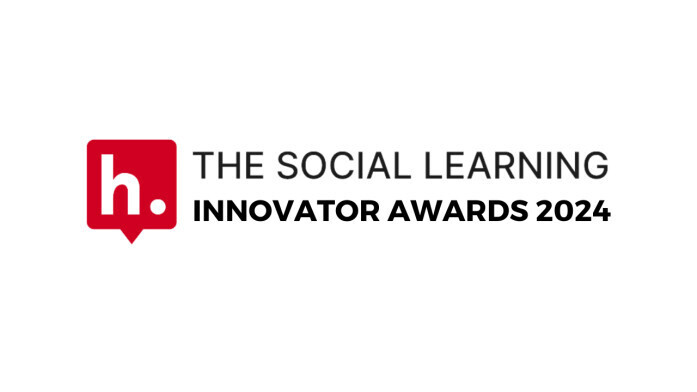Written by Tereza Bízková
If social media marketing is still a great unknown to you, you might be surprised to learn that the field has undergone a significant shift. From the flashy, neatly-edited pictures, we are now seeing a rise in authenticity, with more diverse voices flooding the space, bringing emphasis on self-care and mental health. However, this doesn’t mean that brands are necessarily pushed aside. In fact, they still have a solid place in the realm of social media, provided they are willing to adapt to these changes, take risks, be creative, and reach out to their audiences.
This is one of the key takeaways that Colin Peter O’Riordan, an Irish digital strategist at Brandwidth, shared with us in a recent interview. How did he kick-start his career as a social media professional and what trends does he see that are shaping the industry today?
How did you become a social media marketing professional in the first place?
It all started when I chose to study a Bachelors in Commerce at University College Cork. Luckily, the program offered a huge variety of modules in the first two years and this gave me a taste of everything, from accounting to marketing. It was exactly the kind of course I was looking for as I knew I wanted to enter the business world, but at 18 years old I didn’t know the exact area that would suit me best.
In my third year of the course, I secured a six-month work placement at Merck, a major pharmaceutical company. During this time I learned so much about the world of supply chain management but also realized that it wasn’t the best fit for me. The nature of the job and strict pharmaceutical regulations didn’t allow for much creativity unfortunately.
Coming back to the final year of my degree, I switched my major to marketing. After graduating, I was trying to figure out my next step in my marketing career. I ultimately decided to do a Master’s in Marketing Practice at National University of Ireland Galway. This was such a game changer and made me realize that I was most passionate about social media marketing. For the duration of the Master’s program, each student was placed in a host company, where we were expected to apply marketing theory to a particular business opportunity or challenge. I was lucky enough to secure a placement as Marketing Manager for Garavan’s, a famous whiskey bar in Galway, on the west coast of Ireland.
A whiskey bar? That seems like an ideal space for marketing experimentation, right?
Exactly. It was a very exciting experience because while Garavan’s is one of the best whiskey bars in the country, it didn’t have much marketing infrastructure in place. Their website was out of date and they had minimal social media presence at the time. Besides, they were looking to launch their own branded products, but there was no existing online reputation to leverage.
We revamped the company website, grew their presence across social media platforms and improved their Tripadvisor ranking to number 1 bar in Galway. Brand storytelling was central to all of this as the bar has such a rich history of characters and events.
Instagram was a major platform for us. The bar itself delivers a strong visual impact and I wanted to portray that through high quality pictures and video snippets. Instagram also gave us an opportunity to get the attention of younger demographics. The bar’s clientele would have traditionally been somewhat older, but Instagram really helped us to bridget the gap and attract a younger audience to whiskey.
What were the next defining steps in your career?
After finishing my Master’s and getting some further career experience, I decided to move to New York. This was a major career step for me. Don’t get me wrong – Ireland has some great job opportunities but everything in New York is just at a different scale.
As I had always worked in-house, I decided I wanted to gain some experience working for a fast-paced marketing agency. I also knew that it was the best place to gain experience and become an expert in my chosen field. I worked across many projects, often on multi-national scale and with very generous budgets. But the best part was working with and learning from such talented people across the various teams such as PR, digital and social.
With such a close eye on social media marketing, have you noticed any major shifts in recent years?
Social media is constantly changing, and this is one of the reasons I love it so much. Take Instagram for example. A few years ago, every piece of content shared to the platform seemed to be rather aspirational. I’m talking about that picture-perfect, filtered approach that many brands were using. Now, we see very different content on our feeds. People are looking for more authenticity and can easily detect when something is fake or doesn’t hold much meaning. Consumers have little patience for that superficial content now and brands are taking note.
This trend is also noticeable in influencer marketing. Previously it was all about emphasizing a fabulous lifestyle and no one would talk about difficulties or life’s realities. Influencers have realized that consumers are no longer buying the Instagram dream but are more interested in how the influencer is using their influence for good.
Those who engage with their followers in an honest and real way, enjoy much better engagement. Followers are much more aware of the mental health effects that can stem from social media and find themselves hitting the unfollow button for anyone who makes them feel negative about themselves. I mean, why would you follow someone that makes you feel bad or inadequate? Social media is entering a much more realistic and body and mind-positive era, which is great!
What does this value shift mean for brands?
Any brand that can be more honest and provide value to its followers base is on a good path. I think Dove was one of the pioneer brands that focused on bringing self-esteem and self-love into their campaign messaging. Campaigns such as #RealBeauty, #SpeakBeautiful, and #NoLikesNeeded have all been about encouraging social users to show off their inner beauty. Also, after discovering that 70% of women don’t feel represented in advertising, Dove pledged to stop retouching all photos used in their marketing efforts. This is a bold move and one that doesn’t go unnoticed by consumers.
Likewise, with more actors in the game, brands are increasingly collaborating with micro-influencers. Companies such as Adidas and Forever 21 partially build their social media presence on diversity by empowering new voices. The benefit of collaborating with smaller influencers is the higher level of trustworthiness they possess. With social media the more relatable the influencer, the better the response: These campaigns often bring a greater return-on-investment than brand collaborations with celebrities.
Speaking on return-on-investment, what should brands know about the changing rules and algorithms of social media platforms?
This is something that constantly changes and brands need to keep on track of any such changes. Recently brands have seen their organic reach on Instagram decrease significantly (similarly to Facebook a few years back). The reason for this is clear. Instagram wants brands to pay for ads!
I think the best way brands can keep their engagement levels strong is to make content that encourages discussion. Any brand that engages in conversations will receive much better results in terms of impressions. Some simple ways of doing this is by responding to users in the comment section, pose a question in your social copy or hold an Instagram live session. Focus on building an engaged online community.
Another reason brands should explore other ways of engagement is because likes could soon be removed from the platform. Instagram has been running tests in the past two months in seven countries where post likes have been hidden. This is definitely an interesting development for brands working with influencers, as the number of likes was traditionally seen as one of the main success metrics. I am excited to see how this further affects the whole dynamics of campaign monitoring and goal setting.
How should now brands communicate with their audiences on social media?
Brands who are chatty and focus on building their online communities will succeed. Creating a positive dialogue is key. As mentioned, live streams, Q&A, stories will all help you build a stronger relationship with your followers. In doing all of this, the brand should have a clearly defined tone of voice and be able to represent their personality in an authentic way.
Another crucial element to consider is being timely in responding to comments. I remember a few years back, a British Airways customer paid to promote a tweet that complained about the airline’s customer service for losing his father’s suitcase. The tweet was seen by 76,000 people before BA responded to the tweet (after eight hours). This obviously gave the tweet plenty time to go viral. My advice for brands is to respond to complaints or controversy as soon as possible. By responding in a timely manner, you prove to customers that you care about the situation. The longer you let the complaint sit there, the more damage it causes. A good strategy is to have a plan of action already prepared in the case of social media emergencies. Obviously, not all of the prepared messages will work for every situation. But they will provide you with a good starting point, which should speed up the overall process.
But the bottom line is that brands should always focus on connectivity. The more engagement they get on their posts, the better. Social media algorithms will push their content farther, knowing that it’s something that people want to engage with. And this can only be achieved by publishing authentic and valuable content.









Show Comments